Hostas remain a top pick for landscapers seeking vibrant greenery and diverse textures. Their incredible range of forms, dimensions, and hues allows them to effortlessly complement any design aesthetic. From charming cottage gardens to contemporary landscapes, hostas adapt beautifully. This guide presents 23 innovative ideas for integrating hostas into your landscaping plans. Discover fresh inspiration to enhance your outdoor areas with these delightful plants.
Creating a Hosta Border

Elevate your garden’s charm with a hosta border. These plants, celebrated for their vibrant foliage, offer a striking visual contrast when paired with other garden favorites.
The photo showcases a curved pathway lined with lush hostas and various green plants. The vibrant green hostas beautifully define the walkway, naturally guiding your gaze. This design creates a visually appealing and inviting atmosphere.
Crafting your 2025 hosta border? Explore the diverse hosta options. Variegated leaves can illuminate your garden. Deep green foliage adds rich dimension.
Incorporate vibrant plants and flowers for added visual appeal. This balanced approach enhances the overall aesthetic and spotlights your hostas beautifully.
Hostas for Shady Areas
Hostas remain a top choice for gardeners, particularly for those challenging shady areas. Their vibrant, green foliage forms a beautiful ground cover beneath trees and bushes. The image showcases a stunning display of hostas flourishing in a shaded environment, complemented by diverse plant life.
Hostas boast lush, diverse foliage, enriching your garden’s texture. They thrive in shady areas, solving landscaping challenges. Notice the hostas pictured are budding, promising elegant white flowers. These blooms will soon enhance your garden’s beauty.
Planting hostas requires thoughtful placement. They thrive in rich, moist soil, yet are adaptable. A tall tree above and hostas below create a peaceful, welcoming space. Enhance your garden’s visual appeal by combining hostas with other shade-tolerant plants.
Want to revitalize those shady spots in your garden? Hostas are an excellent solution. They introduce vibrant color and texture, creating a full, thriving landscape. Best of all, they’re low-maintenance, letting you relax and enjoy your garden effortlessly.
Managing Hostas in Dry Conditions
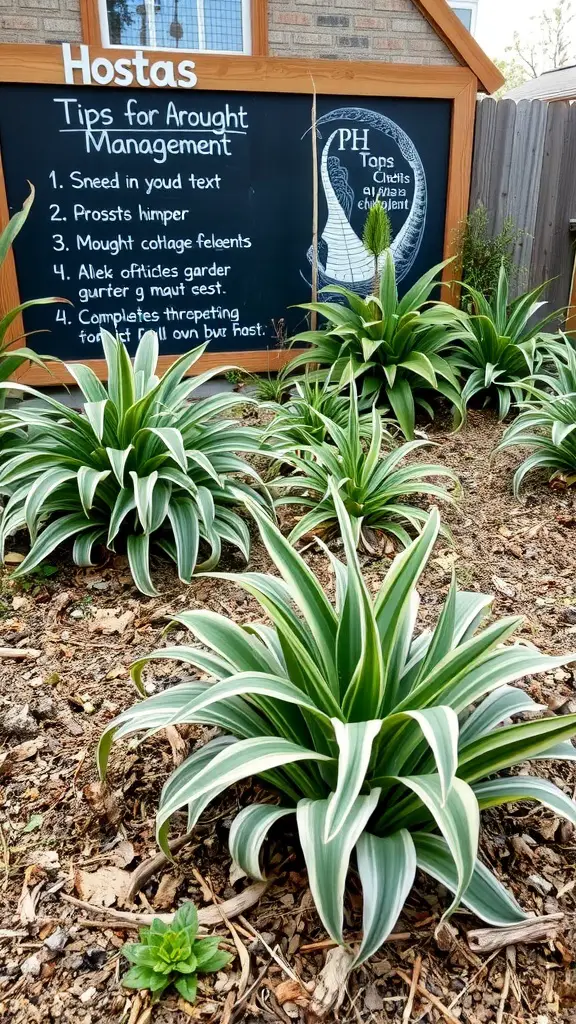
Hostas, known for their vibrant leaves and versatility, can face challenges in arid environments. This picture showcases diverse hosta types thriving in a garden. We also provide practical advice for their successful cultivation.
Hydrating hostas effectively requires providing ample moisture. A key guideline is to water thoroughly, yet not too often. This promotes robust root growth, enabling the plants to access water deeper in the ground.
Applying mulch around your hostas is a great way to keep the soil moist. Organic mulches are beneficial because they hold water and enrich the soil as they decompose. Remember to leave a small gap between the mulch and the hosta stems to avoid rotting.
Also, plant hostas where they get morning sun and afternoon shade. This shields them from intense heat. It also minimizes water loss from evaporation.
Keep a close watch on your hostas for any signs of stress. Look for wilting or browning leaves. If you spot these issues, give them extra attention. Adjust your watering as needed. These simple steps will help your hostas flourish, even when it’s dry.
Mixing Hostas with Other Perennials
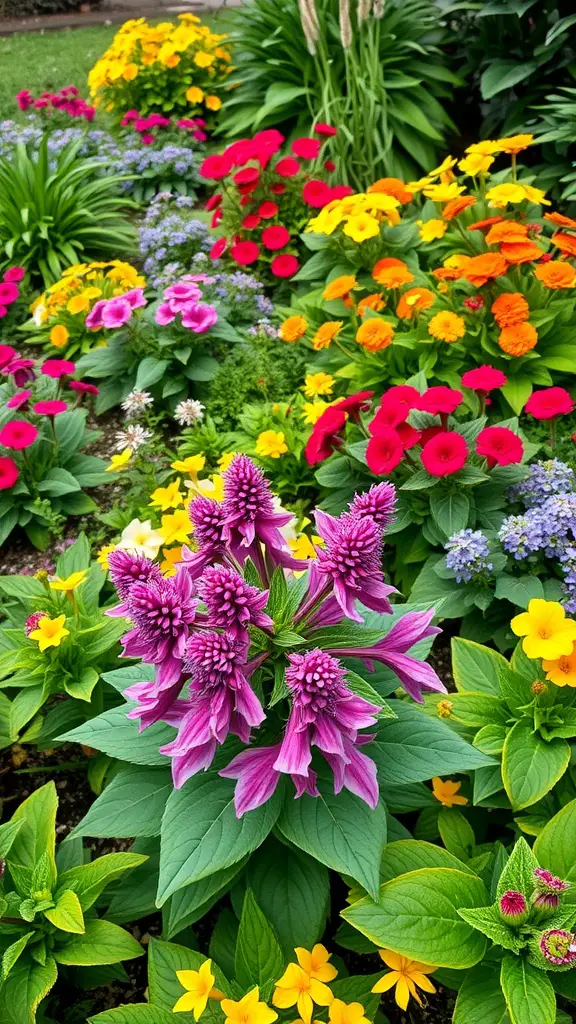
Landscaping benefits greatly from combining hostas with other perennials, resulting in a lively and visually appealing garden. The image showcases a beautiful arrangement of colorful blooms encircling vibrant green hostas. This diverse mix of colors and forms elevates the garden’s charm, creating a sense of vitality.
Hostas, celebrated for their stunning leaves, offer a diverse range of sizes and verdant hues. Here, they create an exquisite setting for vibrant pink, yellow, and red blooms. Combining varying heights and textures allows you to craft a captivating, multi-layered color display, adding significant dimension to your garden.
Think about pairing hostas with ground-hugging blooms. Creeping phlox or daylilies work beautifully. This highlights the hostas’ foliage and lets the flowers pop. For added height, incorporate taller plants. Delphiniums or hollyhocks will draw the eye upward.
Choose perennials with staggered bloom times for a vibrant garden throughout the year. Spring flowers offer early color, followed by summer interest from plants like hostas. This strategy guarantees a lively and visually appealing garden all season.
In 2025, foliage remains key! Enhance your garden by pairing perennials with distinctive leaf shapes or vibrant colors with your hostas. This creates eye-catching visual interest. The interplay of textures will amplify your design, highlighting each plant’s unique beauty.
Watering Techniques for Healthy Hostas
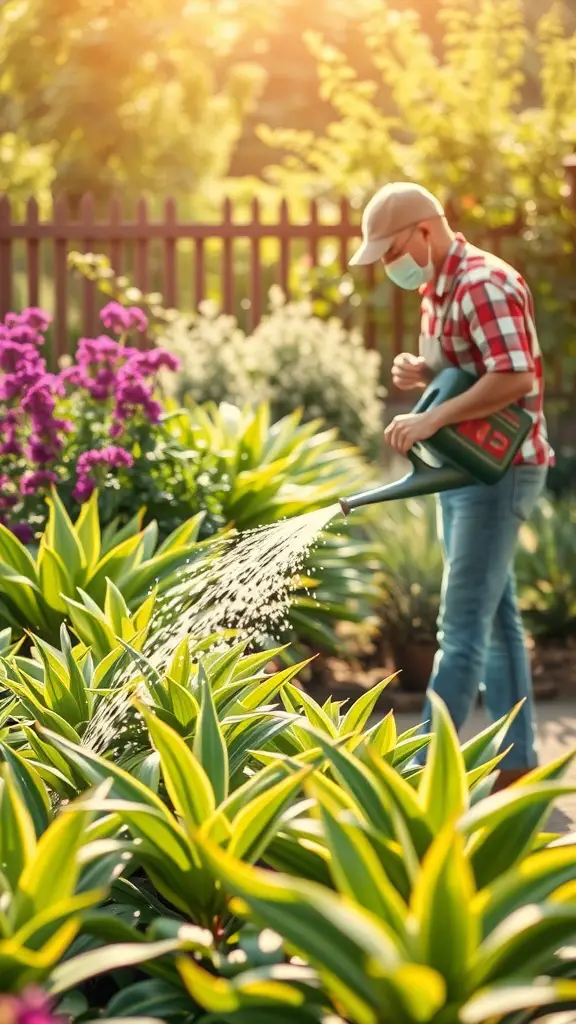
Hostas are beautiful plants adaptable to many gardens. Correct watering is key for their healthy growth and vibrant color. The image shows a gardener carefully watering hostas with a watering can, amidst a backdrop of bright flowers.
Watering hostas effectively means saturating the soil deeply, as they love moisture. The ideal time to water is early morning, giving the foliage time to dry before nightfall. This proactive approach minimizes the risk of diseases that flourish in humid environments.
Watering cans offer superior control, as demonstrated in the image. Easily target the plant’s base directly. Avoid watering the leaves from above. This prevents excess moisture, which can harm certain plant types.
Establish a consistent watering plan for optimal results. Regularly assess soil moisture by inserting your finger about an inch deep. Water when the soil feels dry to the touch. Consistent watering is crucial for maintaining healthy hostas.
Finally, mulching hostas helps the soil retain moisture. This keeps roots hydrated and minimizes weed growth. Weeds often compete for vital nutrients. Using these watering strategies will definitely help your hostas thrive in 2025!
Choosing the Right Hostas for Your Garden
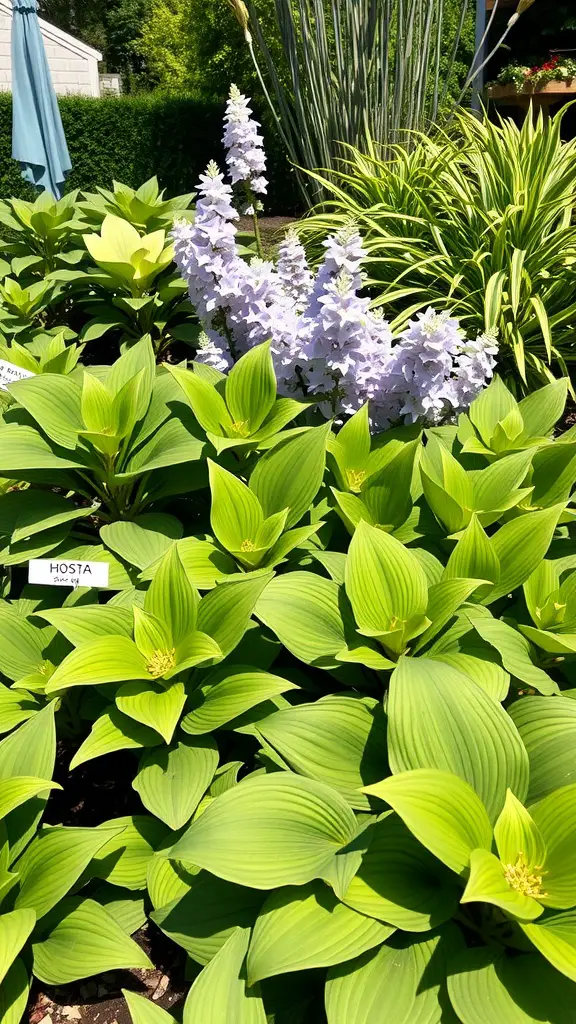
Hostas remain a popular choice for gardeners in 2025, prized for their beautiful leaves and diverse forms. The picture displays a stunning collection of hostas, their large, green leaves providing a full and attractive setting for other plants. Sunlight brightens their hues, making them appear even more appealing.
Choosing hostas for your 2025 garden? Think about their mature size and how they spread. Some stay small, others get quite big. The hostas in this image boast a beautiful, consistent leaf design, enhancing their appeal. Combine them with contrasting flowers, such as the delicate purple ones displayed, for a truly eye-catching display.
Consider your garden’s lighting. Hostas excel in shaded locations. The image suggests a peaceful, shady space perfect for them. Evaluate your garden’s light levels. Select hosta varieties that will thrive in those conditions.
Consider the diverse color options. These hostas showcase bright greens, but blue or patterned leaves are also available. Incorporating varied colors enhances your landscape’s depth and visual appeal. With careful selection, hostas can turn your garden into a thriving and welcoming sanctuary.
The Ideal Soil Conditions for Hostas
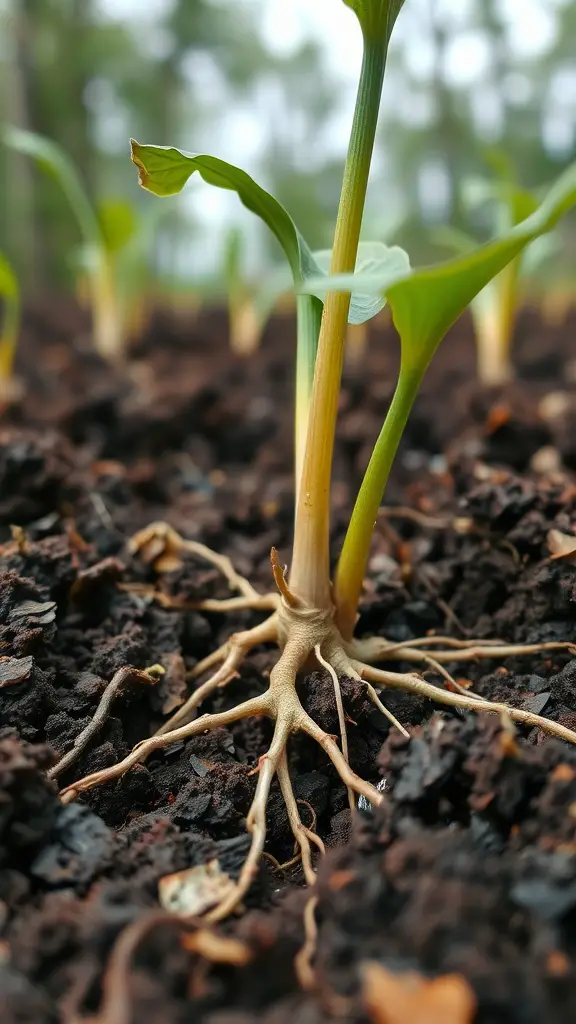
Optimal soil is key for thriving hostas. The image showcases a young hosta, its roots deeply embedded in fertile, dark soil. This soil type promotes robust growth, allowing the plant to efficiently absorb vital nutrients and moisture.
Hostas flourish in consistently moist, yet well-drained soil. The soil’s texture in this image appears loose, promoting excellent drainage while retaining vital moisture. This is crucial for these shade-loving plants. A balanced blend of organic material guarantees the hostas receive all necessary nutrients for optimal growth.
Boost your soil’s quality by incorporating compost or aged manure. This enriches the soil and aids in water conservation. Provide your hostas with a thriving, nutrient-packed habitat for robust and brilliant growth.
Hostas thrive best in soil with a slightly acidic to neutral pH, ideally between 6.0 and 7.5. Testing your soil’s pH is crucial for optimal growth. To ensure your hostas flourish, prioritize well-draining, nutrient-rich soil that retains moisture effectively.
Companion Plants for Hostas

Elevate your garden design by selecting the perfect companion plants for your hostas. The image showcases a stunning blend of textures and colors, beautifully enhancing the hostas’ rich foliage. Notice how the vibrant green ferns create a textured backdrop, offering a delightful contrast that makes the hostas truly pop.
Besides ferns, explore options like astilbe and heuchera. Astilbe boasts delicate, plume-like flowers, enhancing your garden’s elegance. Heuchera, available in a spectrum of hues, effectively covers ground and complements your design. Both flourish under conditions similar to hostas, making them ideal companions.
Consider adding vibrant flowering plants such as blue lungwort or foxglove. Their colorful blooms create eye-catching focal points. Notice how the blue flowers in the background of our image beautifully complement the surrounding green foliage, adding a delightful splash of color.
Combine these plants with hostas for a stunning garden. Enjoy texture, color, and year-round interest. The secret? Balance foliage and flowers. Let each plant thrive while complementing the others.
The Beauty of Variegated Hostas
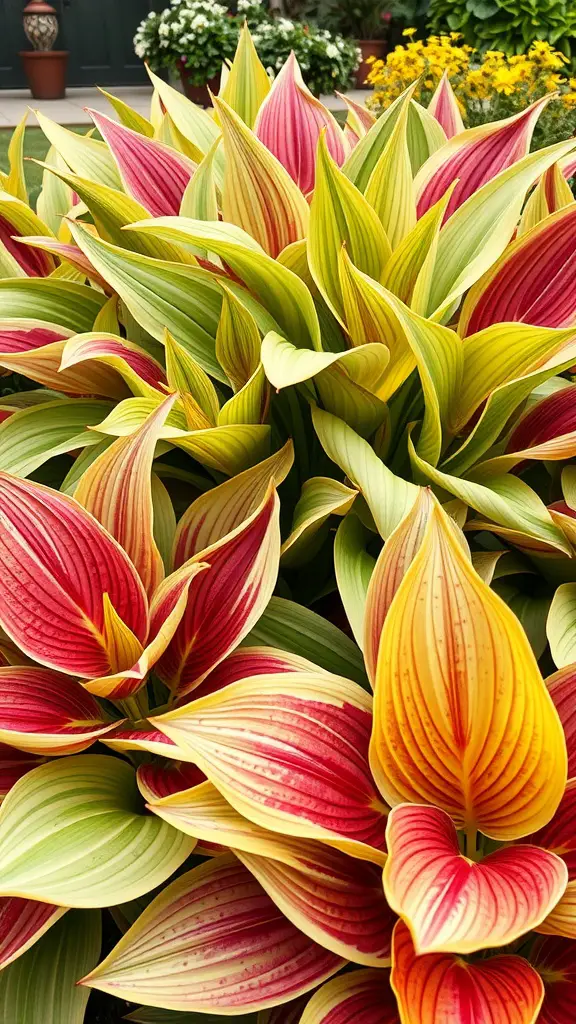
In 2025, variegated hostas remain a garden favorite. Their striking foliage, with its diverse color palette, effortlessly enhances any landscape. The interplay of greens, yellows, and reds creates a dynamic visual appeal, ensuring these plants become a focal point.
This image showcases a vibrant collection of variegated hostas. Their leaves display a spectrum of colors, from deep green to sunny yellow. Bold red stripes add a striking contrast, enhancing their visual appeal. This colorful mix injects both beauty and vitality into any garden setting.
These adaptable plants shine in diverse environments. Use them in garden borders, decorative pots, or as striking centerpieces. They effortlessly complement other blooms and greenery, crafting a balanced and appealing aesthetic.
Variegated hostas also offer easy care. After they settle in, they flourish in shade or partial shade. They need very little attention. This makes them ideal for experienced and new gardeners.
Dealing with Hostas Pests and Diseases
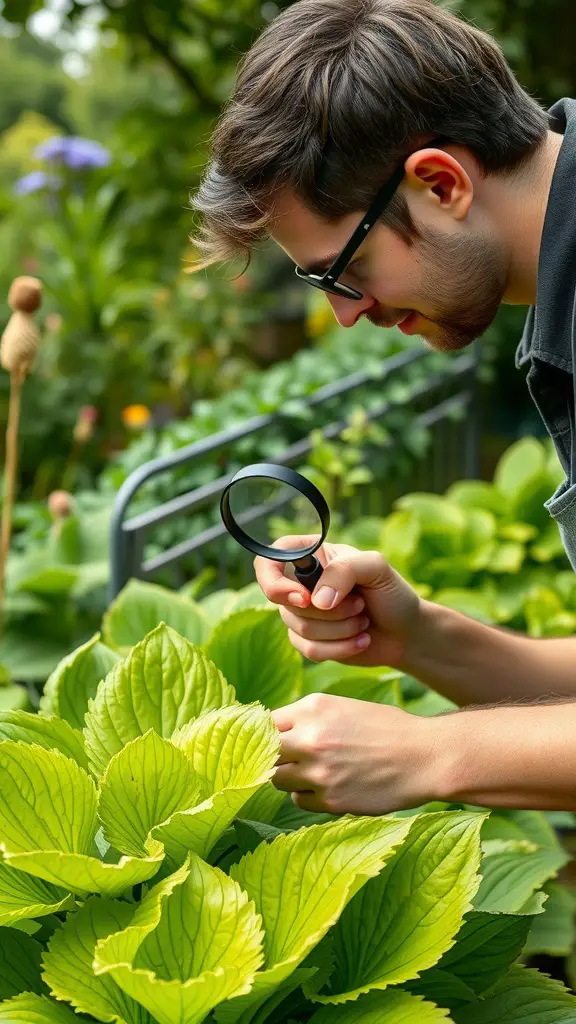
Hostas, known for their beauty, are susceptible to various pests and diseases. The image shows a person meticulously examining a vibrant hosta with a magnifying glass. This detailed inspection is highly recommended for all hosta lovers.
Consistent monitoring allows for early problem detection. Watch for pest indicators, such as slugs or snails, known for devouring delicate foliage. Discovering holes or unusual colors signals the need for a closer inspection.
Fungal diseases are a frequent problem, especially in humid environments. Ensure adequate airflow around your hostas and water at the base, not from above. If you spot any unusual blemishes, promptly remove the affected leaves to control the spread.
Protect your plants with organic pest control! Neem oil effectively combats pests and diseases. Apply it during cooler hours to prevent leaf damage. This ensures healthy growth.
Hostas as Ground Cover
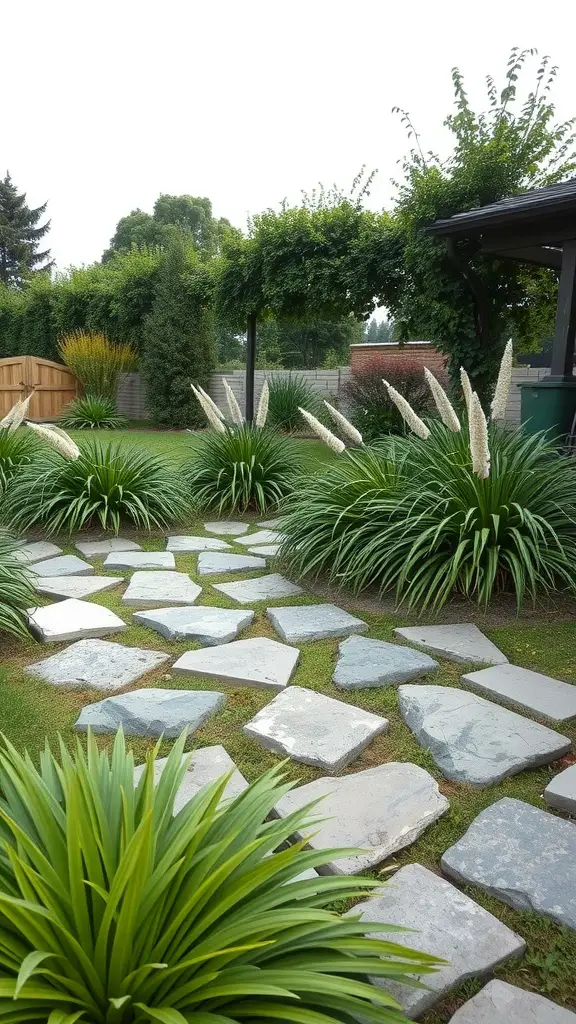
Hostas excel as ground cover, particularly in shady spots where many plants falter. Their vibrant leaves form a stunning carpet, ideal for filling bare areas. The picture showcases hostas flourishing near stone paths, injecting a burst of green into the scenery.
Hostas offer a spectrum of green hues, ranging from bright to dark. This makes them incredibly adaptable to diverse garden designs. Their sizable leaves also create a pleasing textural contrast against stone elements.
Hostas are also incredibly easy to care for, a major advantage as ground cover. After they’re established, they need minimal attention, ideal for gardeners with busy schedules. Simply water during dry periods and trim occasionally to maintain their appearance.
In this picture, the hostas enhance the yard’s beauty and effectively combat soil erosion near the path. Their roots firmly secure the soil, ensuring stability. Hostas are a fantastic choice if you want to fill empty spaces or cultivate a vibrant, thriving garden.
Hosta Maintenance Through the Seasons
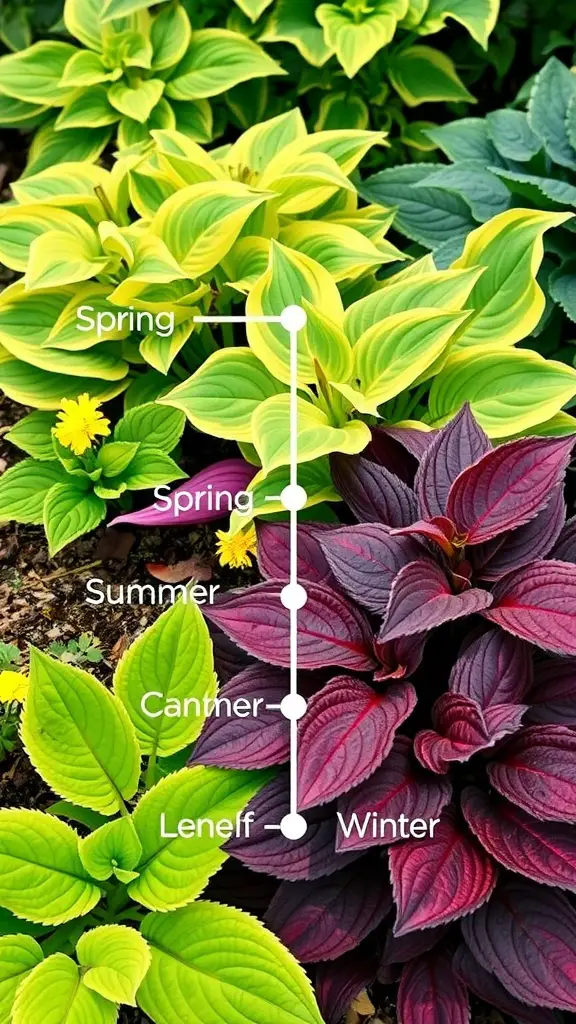
Hostas remain a top choice for gardeners due to their beautiful leaves and adaptability. The image displays a stunning array of hostas, featuring diverse colors and textures. This highlights their ability to revitalize any garden. The seasonal growth stages provide a clear understanding of their development throughout the year.
As spring arrives, hostas emerge from dormancy. Inspect them for any dead foliage and trim as needed. New shoots will appear, making this the ideal season for planting or dividing hostas to promote denser growth.
Summer’s here, and hostas are flourishing! They love the heat, so water them often to keep their leaves looking lush and bright. You’ll likely see flowers blooming on tall stems, enhancing your garden’s beauty even further. Enjoy your vibrant hostas this season!
As autumn arrives in 2025, prepare your hostas for winter. Trim away dead leaves and clear debris to minimize pests and diseases. Apply mulch around the base to insulate the roots from the cold.
Winter offers hostas a much-needed rest period. They enter dormancy, so adequate mulching is key. This protects them from severe weather. Consistent seasonal care ensures your hostas deliver a beautiful display every year.
Using Hostas for Container Gardening
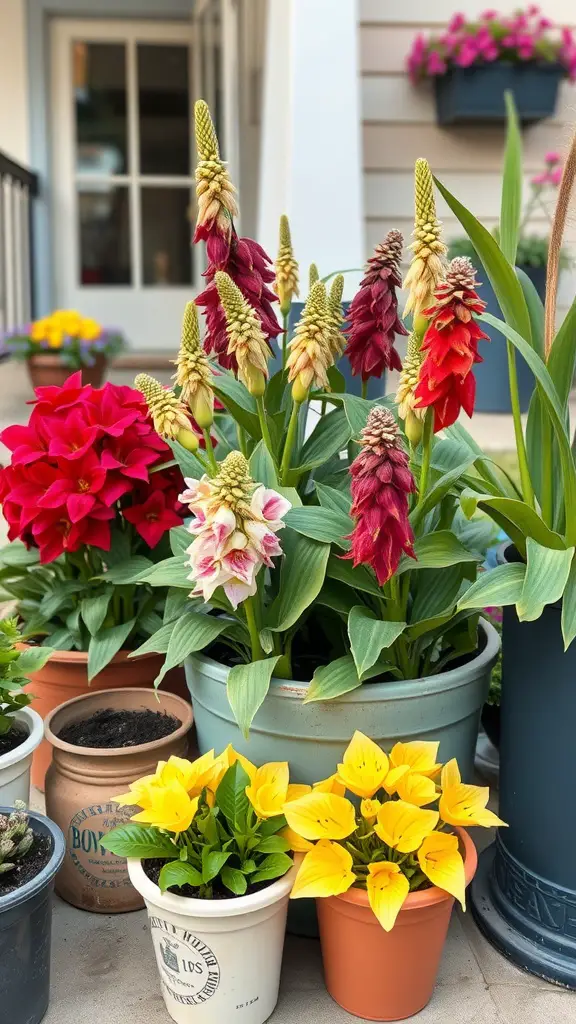
Hostas are beautiful additions, perfect for enhancing your container garden. The image showcases a variety of colorful blooms, but the hostas truly shine with their bright green foliage. These adaptable plants are celebrated for their ability to flourish in diverse environments.
Growing hostas in containers is a fantastic method to bring lush foliage to your outdoor living areas. Think patios, balconies, or even your front porch! Hostas offer a wide array of sizes and colors. This makes selecting the perfect plant for your specific area simple. The vibrant yellow hostas pictured here inject a dose of sunshine. They also create a lovely contrast with the surrounding blooms.
Hostas are fantastic because they’re low-maintenance after they settle in. Ensure they have sufficient shade and water, and they’ll thrive beautifully. Hostas are perfect for crafting a peaceful garden retreat or a vibrant, eye-catching showcase.
Hostas for Small Spaces

Hostas are excellent for gardens or balconies with limited space. They adapt well to different conditions and fit easily into small areas. The image displays a beautiful array of potted plants, demonstrating how hostas complement other flowers perfectly.
Even a tiny balcony can become a hosta haven! You don’t need a huge garden to appreciate these beauties. Their vibrant green leaves complement bright flowers perfectly. This creates a stunning visual display. Varying pot sizes add interest and depth to the small space.
Hostas are ideal for small spaces, especially since they thrive in shady conditions. They can illuminate dimly lit areas, making them excellent for city gardens. You can easily craft a lively and colorful scene by selecting different hosta varieties without overcrowding your space.
Adding hostas to your compact landscaping design is a rewarding choice. These plants beautify your area and create a peaceful atmosphere with their lush foliage. If you want to revitalize your small balcony or garden, think about including these charming plants!
Incorporating Hostas in Rock Gardens
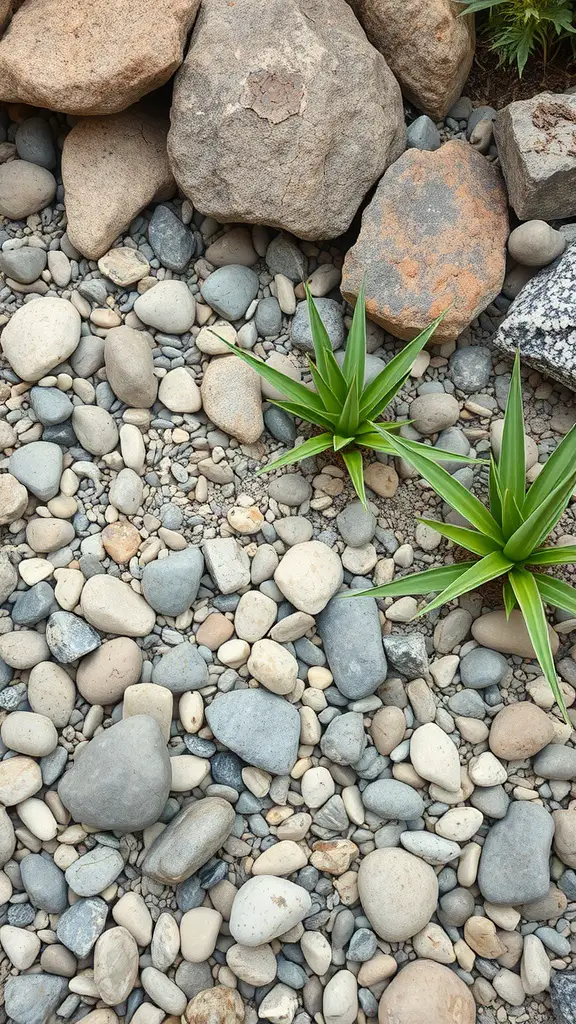
Hostas elevate rock gardens with their vibrant green hues and interesting textures. This image showcases a stunning rock garden design, perfectly suited for hosta growth. Notice how the diverse shapes and colors of the rocks emphasize the hostas’ elegant foliage.
Elevate your 2025 rock garden design by incorporating hostas. Their vibrant leaves beautifully contrast the rocks’ harshness, fostering tranquility. Select diverse hosta types for varied sizes and leaf hues, enhancing the natural stone’s appeal.
Plant hostas in shady spots; they flourish in cooler environments. Rocks aid in soil moisture retention, benefiting the hostas. Apply mulch or small stones around the plant bases to further help retain moisture. Consider using self-watering planters for even more consistent hydration in 2025.
Adding hostas to your rock garden boosts its beauty and helps the environment. They draw in pollinators, which is great for your other plants. Be imaginative with your rock designs and let your hostas stand out!
Creating Texture with Hostas
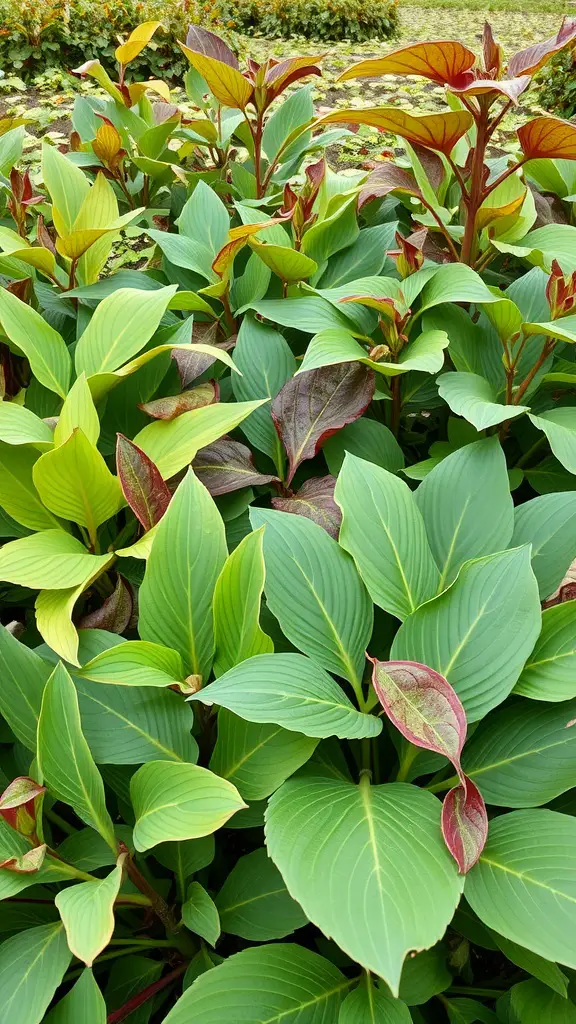
Hostas remain a top pick for enriching garden textures. Their wide, vibrant leaves offer diverse shapes and hues, ensuring captivating views. The image showcases a striking blend of green and reddish foliage. This pairing elevates the garden’s aesthetic appeal and introduces captivating textural dimensions.
Leaf overlap generates a gentle, organic feel in your garden. Explore the diverse hosta options, from petite, dense forms to grand, eye-catching specimens. Combining various sizes adds visual interest and depth to your garden design.
Designing your garden with hostas requires a balanced approach. Combine them with plants offering contrasting textures, like sharp grasses or soft blooms. This creates an appealing, multi-layered visual effect. Feel free to play with different arrangements; surprising combinations often produce the most stunning outcomes.
Consider your garden’s light exposure. Hostas excel in partial or full shade. They are perfect for challenging areas where other plants fail. Their versatility and diversity can turn your garden into a lush, textured haven.
Hostas in Garden Design Themes
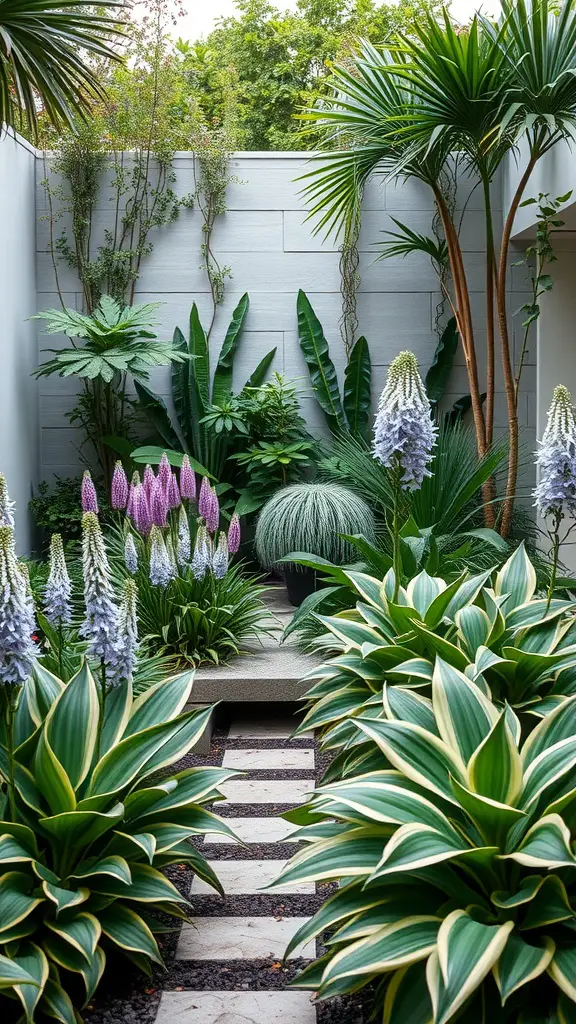
Hostas elevate any garden, crafting a vibrant and inviting space. This image highlights a stunning garden design where hostas are central. Their bright green and cream-striped foliage offers a captivating contrast, instantly drawing the eye.
A stone-paved path beckons visitors deeper into the garden. Hostas are cleverly used to define the pathway’s edges, guiding the viewer’s gaze. The diverse plant selection, featuring both towering blooms and lush tropical leaves, elevates the garden’s beauty. This demonstrates how hostas can beautifully complement a range of garden features.
Hostas are visually appealing and flourish in shady spots. This makes them perfect for gardens lacking direct sunlight. Gardeners can now easily cultivate previously difficult areas. Combining hostas with other plants adds depth and texture. Transform any simple space into a lively, relaxing haven.
The Role of Hostas in Wildlife Gardens
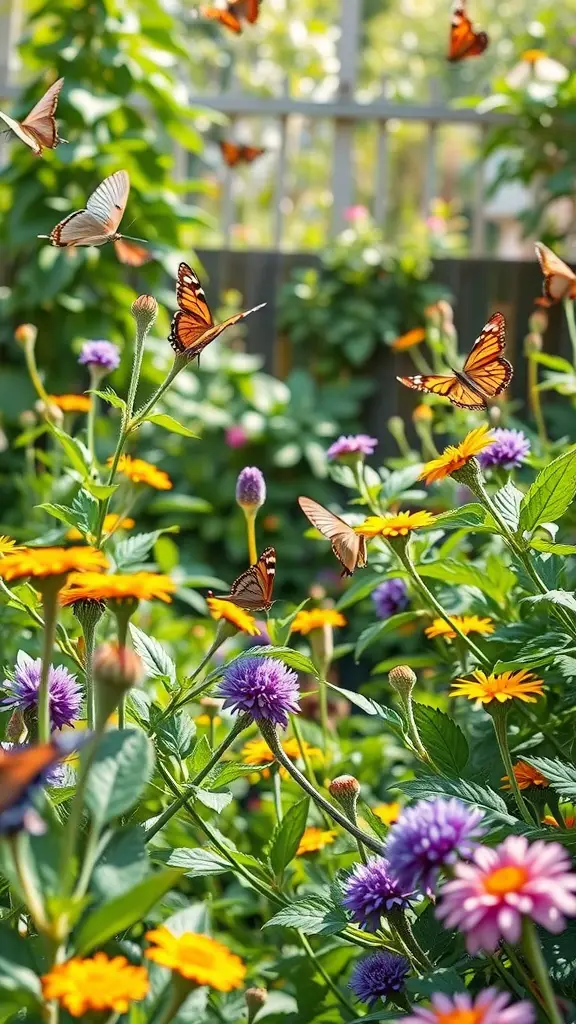
Hostas are beautiful and beneficial in wildlife gardens. They provide essential shelter and food, especially for pollinators. Their dense leaves create a safe haven for insects and small animals. This makes hostas a fantastic addition to any wildlife-friendly garden.
Imagine a thriving garden, much like the one pictured. Hostas offer a beautiful contrast to the bright hues of flowering plants. Watch the butterflies dance around; hostas play a vital role in drawing these pollinators. Together, hostas and flowers build a vibrant ecosystem, supporting a wide range of life.
Hostas, when strategically planted, boost your garden’s vitality. They draw in helpful insects and elevate the aesthetic appeal. Their large leaves act as a natural mulch, retaining soil moisture and promoting the growth of nearby plants.
Designing a Hosta-Centric Garden
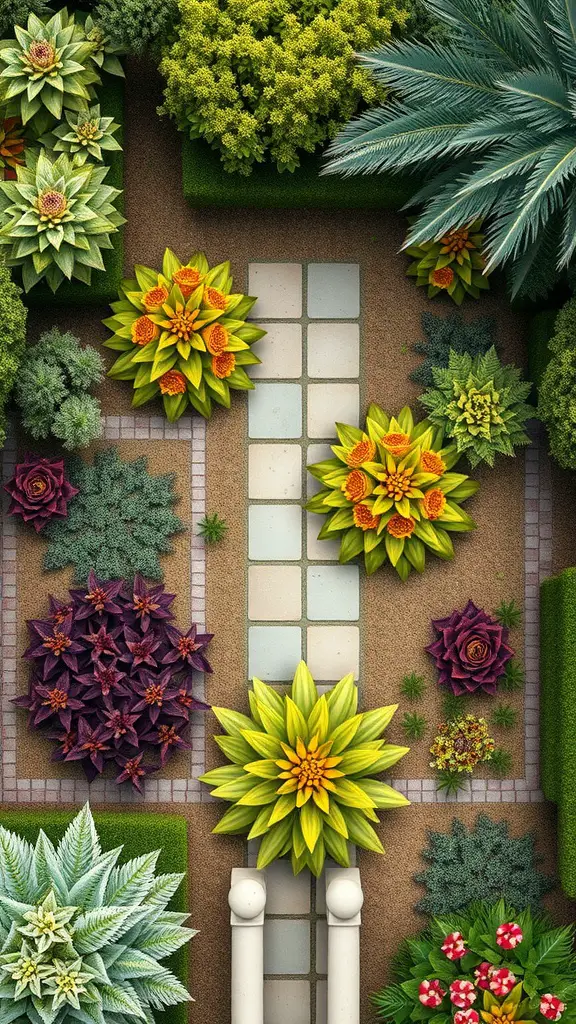
Hostas remain a top choice for gardeners in 2025, celebrated for their vibrant leaves and diverse forms. The image showcases a thoughtfully designed garden, emphasizing the hosta’s appeal. The bright green and yellow hues create an energetic and welcoming garden environment.
The garden path naturally draws your attention, establishing a smooth visual journey. This layout effectively highlights hostas as the primary attraction, with other plants playing a supporting role. Combining diverse hosta types reveals captivating differences in leaf forms and hues.
Adding complementary plants, such as those with vibrant purple and red leaves, enhances your garden’s visual appeal. Each plant contributes uniquely, resulting in a balanced and captivating landscape. As you design your hosta garden, think about how various plants can work together to create a thriving ecosystem.
Remember to consider your plants’ needs. Hostas flourish in partial shade. Strategic placement will highlight their beauty. A well-designed garden offers a tranquil escape, brimming with vibrant life and color.
Propagation Techniques for Hostas
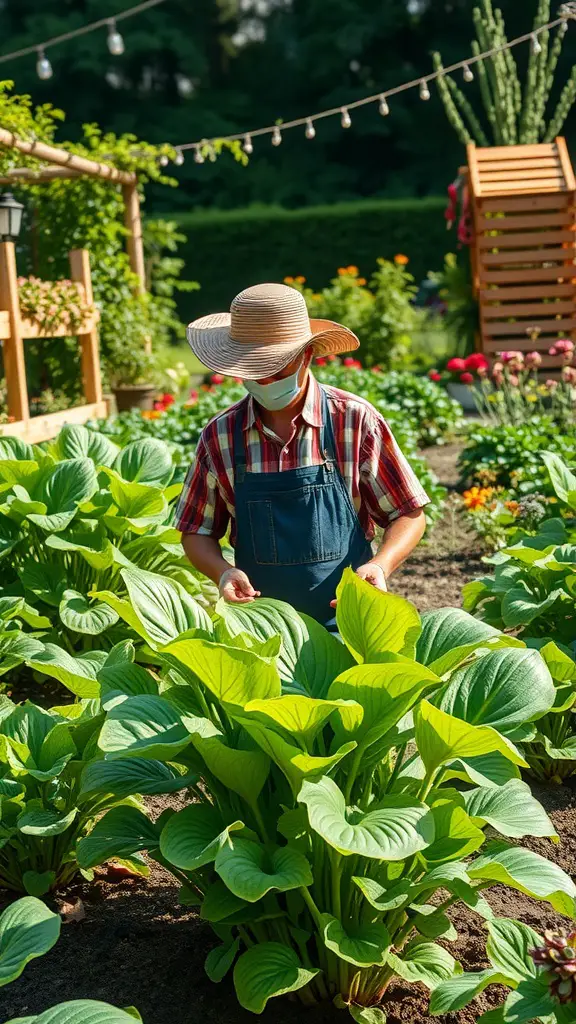
A gardener is shown carefully tending to a thriving hosta garden. The hostas’ bright green leaves create a stunning contrast against the manicured landscape. This image captures the pleasure of gardening and the dedication required to cultivate these plants.
Hostas remain a garden favorite due to their beautiful leaves and simple propagation. Division is a widely used technique. This involves lifting the hosta and gently splitting its root system. Early spring or autumn, when growth slows, are the ideal times for this process.
Offsets offer another propagation technique. These are small hosta plants growing near the main one. Carefully separate and replant them. For successful propagation, select robust, disease-free parent hostas. Ensure they receive appropriate soil and sunlight for optimal growth.
Hostas flourish in shady locations. They are ideal for areas where other plants may not grow well. Proper care allows you to easily propagate and enhance your garden with these beautiful perennials. Consider them for your 2025 garden plans!
Hostas for Edging Pathways
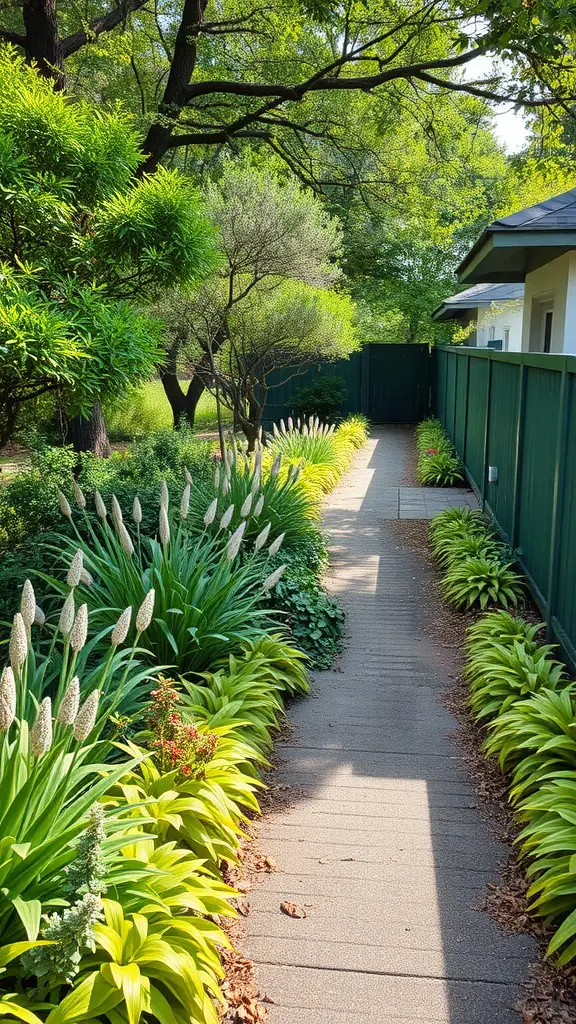
Hostas make excellent pathway edging plants, adding charm to any garden. This image showcases a peaceful walkway bordered by thriving hostas, creating a welcoming ambiance. Their rich green foliage provides a striking contrast, enhancing the path’s visual appeal.
Hostas offer incredible landscaping versatility with their diverse sizes and colors. Opt for lighter hues to create a refreshing ambiance, or select deeper greens for a bolder statement. The elegant flower spikes that rise from hostas during bloom time provide an additional visual appeal.
These shade-loving plants are ideal for gardens with limited sunlight. They’re also incredibly low-maintenance, perfect for busy gardeners. Hostas’ lush foliage beautifully defines garden spaces. They gently guide visitors while highlighting nature’s splendor.
Consider blending various hosta types to introduce diverse textures and vibrant colors. Combining hostas with other shade-tolerant plants results in a lively, verdant border, enriching your landscape’s appeal. Hostas significantly enhance pathway designs, regardless of your garden’s size.
Seasonal Hostas Blooms
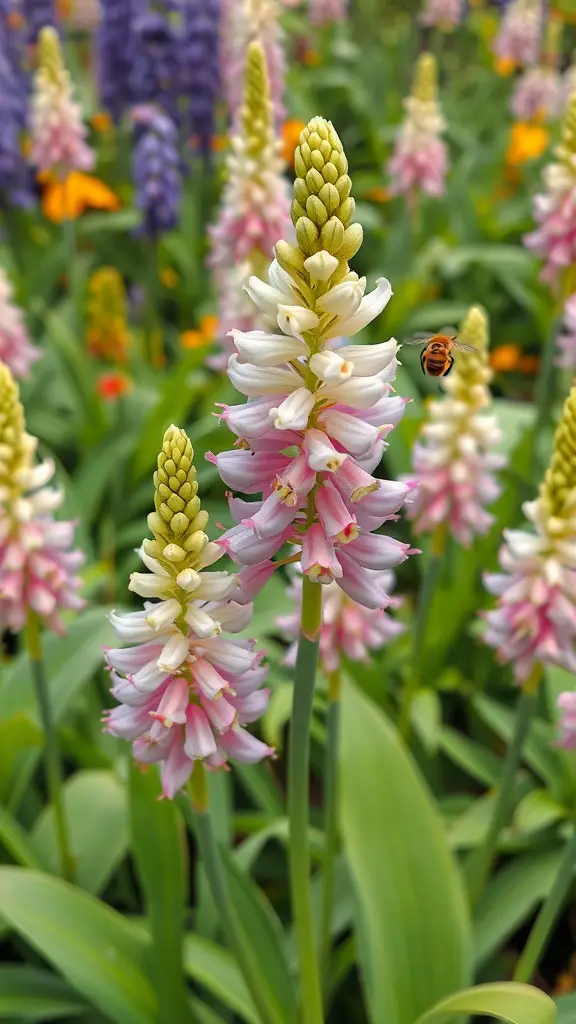
Hostas elevate any garden, particularly when their blossoms emerge in the summer heat. These plants boast stunning flowers, enriching your landscape’s beauty. Every season offers a distinct appeal, making hostas a flexible option for modern gardeners in 2025.
This photo showcases the exquisite hosta blossoms in a lively garden. Towering spikes boast pink and white flower clusters, nestled among rich green leaves. Bees and other pollinators love these flowers, bringing your garden to life. Explore a hosta garden and admire the diverse colors and shapes.
Hostas offer diverse bloom times, ensuring floral beauty from late spring to summer. This extended display enhances your garden’s appeal and supports beneficial insects. Strategically arranging your hostas can further amplify the allure of your outdoor living area.
Showcasing Hostas in Landscape Architecture
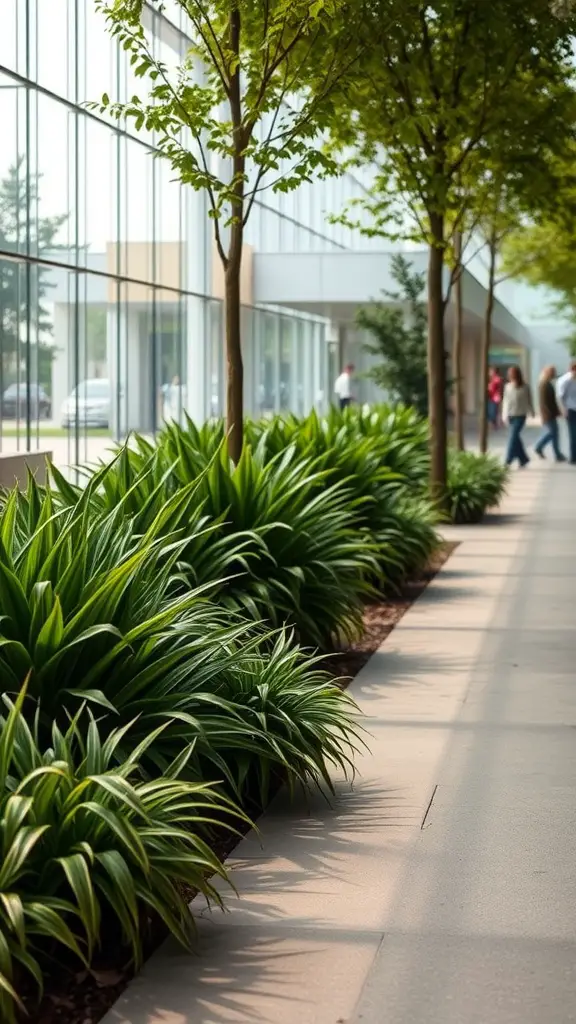
Hostas remain a top pick for 2025 landscape designs, prized for their rich green hues and diverse leaf shapes. The photo showcases hostas bordering a walkway near contemporary buildings. Their lively leaves provide a gentle visual balance to the clean lines of glass and concrete.
These plants flourish in shaded or partially sunlit spots. This makes them ideal for areas lacking intense direct sunlight. Their arrangement enhances the landscape, introducing a serene and natural ambiance.
Besides the hostas, taller trees offer extra shade and structure. This mix boosts visual interest and supports diverse life. Hostas attract helpful insects and give small animals a safe place to hide.
Adding hostas to your garden is a fantastic choice. They’re low-maintenance, perfect for today’s fast-paced lifestyles. Use them to edge pathways or plant them in clusters. Hostas effortlessly turn ordinary spaces into lush, green retreats.

